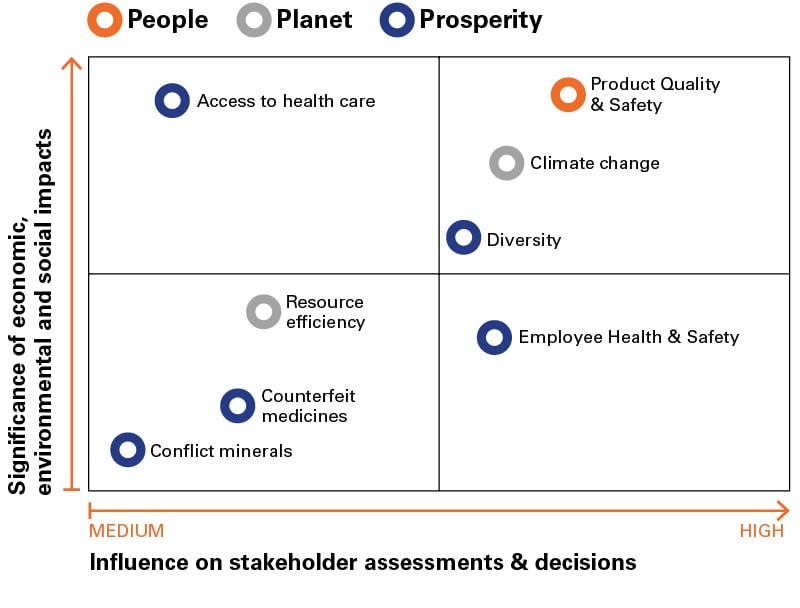How Envirotainer became the first CO2 neutral cold-chain company in the world
Sofia Wiwen-Nilsson
Head of Marketing and Communications

In 2020, as the first cold-chain company in the world, Envirotainer became CO2 neutral in scope 1-3, excluding use-phase, with the lowest total CO2/m3 of pharmaceutical product shipped footprint of all comparable solutions.
The debate on environmental sustainability in the pharmaceutical industry had until recently mainly concerned production related issues, including discharges of substances to water and the use of certain chemicals. During the last year, the focus has increasingly turned to circular economy, climate change and the impact the choice of transportation solution has on CO2 emissions.
Between 3-8% of pharmaceutical companies’ total CO2 emissions are generated by transportation. This seems small enough that the choice of transportation solution should be inconsequential, but in fact it can have a significant impact on the overall emissions. The reason is that between 80-90% of the CO2 emissions in the pharmaceutical value-chain are generated in production and raw material sourcing. From an environmental standpoint it is therefore crucial to prevent these temperature-sensitive pharmaceuticals from being discarded due exposure to temperature deviations during transport, and replacements required to be manufactured all over again.
600 million vials of pharmaceuticals were transported in our cold-chain solutions in 2020
For these reasons, some of Envirotainer’s key sustainability KPIs track how well we are protecting the pharmaceuticals transported in our solutions, and we are happy to report industry-leading levels of 0.1% temperature deviations and 0.0% product loss during 2020. We believe this is especially noteworthy considering that some 600 million vials of pharmaceuticals were transported in our cold-chain solutions in 2020.
However, the fact that Envirotainer’s biggest impact on CO2 emissions comes from ensuring there are no product losses during transportation, doesn’t absolve us from the responsibility to make our own operations as environmentally friendly as the current state of technology will allow.
In 2019, Envirotainer thus initiated a thorough revision of our Sustainability Strategy, including setting detailed goals and actions areas. The starting point was Envirotainer’s business plan and the global sustainability agenda, including frameworks and initiatives such as Agenda 2030 and the UN Global Compact.

The Sustainability Strategy revision process included a stakeholder analysis, a materiality assessment, a mapping of which Sustainable Development Goals (SDGs) Envirotainer can contribute most to, a calculation of Envirotainer’s total CO2 footprint according to the Greenhouse Gas Protocol, and a Lifecycle Analysis of our products. Based on this, Envirotainer’s revised Sustainability Strategy now includes our defined Core Sustainability Areas and for each of those, Strategic Objectives, Key Performance Indicators and Action Areas.
The UN Sustainable Development Goals – Where Can Envirotainer Contribute Most?
The UN Sustainable Development Goals (SDGs) are at the base of Envirotainer’s sustainability strategy. Launched by the UN in 2015, the SDGs are a set of 17 global goals aimed at transforming our world by 2030. Through goals such as eradicating poverty, reduced inequality, and responsible consumption and production, the SDGs make the route to a better world more tangible and actionable.
We reviewed all 17 Global Goals for Sustainable Development and their 169 targets and evaluated where we as an organization could make the most impact. By reducing the negative impacts of our operations, contributing to positive change and engaging in society at large, we decided we would contribute the most to seven of these goals:
- Goal 3: Ensure healthy lives and promote well-being for all at all ages
- Goal 13: Take urgent action to combat climate change and its impacts
- Goal 12: Ensure sustainable consumption and production patterns
- Goal 17: Revitalize the global partnership for sustainable development
- Goal 5: Achieve gender equality and empower all women and girls
- Goal 8: Promote inclusive and sustainable economic growth, employment and decent work for all
- Goal 10: Reduce inequality.
Envirotainer’s Core Sustainability Areas
Based on the materiality assessment and stakeholder analysis conducted in 2019, Envirotainer identified the strategic areas, or Core Sustainability Areas, that we saw as prioritized for our contribution to sustainability. The Core Sustainability Areas were organized in a framework consisting of four ”Pallets” and a ”Base”.
The Base is the foundation on which our four core sustainability focus areas stand:
- Working with the highest standards of compliance, building strong governance structures and ethical operations.
The Pallets are the four core sustainability focus areas:
- Ensuring uninterrupted patient-safe and cost-efficient global access to pharmaceuticals
- Being a climate leader and partner that decreases green-house-gas emissions and improve resource efficiency in the pharma cold chain
- Being an attractive employer with healthy, diverse and engaged employees to foster a value driven high-performance culture
- Collaboration and innovation within our eco-system to actively expand economic, environmental and social sustainability.
Strategic Objectives and Key Performance Indicators
Each of Envirotainer’s four core sustainability focus areas are mapped on the UN Sustainable Development Goals, and Strategic Objectives as well as Key Performance Indicators have been developed for each core sustainability focus area.
In addition, a thorough life-cycle analysis of our shipment solutions compared to other solutions offered in the market clearly shows Envirotainer’s solutions to be the most CO2-efficient in the industry. We are very proud of both these achievements, and that the work done gives a clear picture not only of our own environmental impact but also of how we can help our customers reduce their respective CO2 footprint.
For more details on the KPIs we use and detailed statistics of our performance in 2020, please read Envirotainer Sustainability Report 2020.